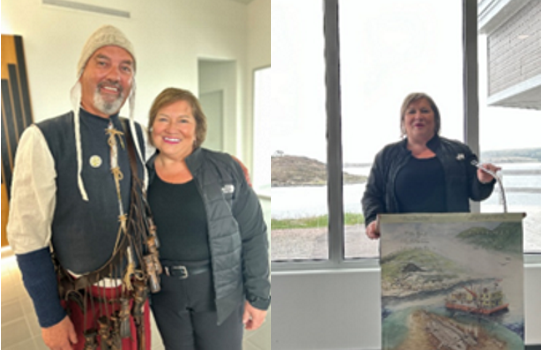Red Bay – Parks Canada protects natural and cultural treasures in Canada and is proud to contribute to the country’s world-class tourism destinations. As cornerstones of Canada’s tourism industry, Parks Canada administered places are committed to providing visitors with high quality and meaningful visitor experiences and supporting tourism in communities across the country.
Yvonne Jones, Parliamentary Secretary to the Minister of Northern Affairs and to the Minister of National Defence (Northern Defence) and Member of Parliament for Labrador, on behalf of Steven Guilbeault, Minister of Environment and Climate Change and Minister responsible for Parks Canada, announced funding for a new $3.6 million suite of interpretive offerings and interactive exhibits at Red Bay National Historic Site in Red Bay, Labrador following a community event. Through this federal investment – part of the $557 million in funding announced by the Government of Canada in late 2022 – these experiential offerings will showcase this UNESCO World Heritage Site to visitors from around the globe starting in June 2025.
During the mid-16th century, large numbers of right and bowhead whales drew whalers from the Basque region of Spain and France to the Strait of Belle Isle, where they established a major whaling port at Red Bay. For some 70 years, Basque whalers made the dangerous, month-long journey across the Atlantic to hunt whales and produce the oil that lit the lamps of Europe. With this funding, and in collaboration with Indigenous partners, stakeholders and community members, Parks Canada will create new exhibit and interpretive installations that will transform the visitor experience at Red Bay National Historic Site. These will include interactive exhibits in the newly renovated Visitor Centre; outdoor interpretive elements, including an interpretive circuit on Saddle Island focusing on four interpretive nodes; and a Whaler’s Memorial on Saddle Island. The new exhibits will acknowledge the long history of human occupation of the site, including Indigenous groups who came before and after the Basques.
Parks Canada recognizes the area now designated as Red Bay National Historic Site has been traversed and occupied by many peoples over the centuries. The arrival of the Basques crystallized the historical significance of Red Bay, but the land is of significance to many communities whose past is intrinsically linked to what is today a UNESCO World Heritage Site. Parks Canada recognizes the rich exchanges and collaboration with each of these communities, allowing for a project where many voices can express their stories, in their own words, and celebrate the world-renowned significance of Red Bay National Historic Site. Across the country, Parks Canada works in collaboration with Indigenous peoples to develop interpretive materials and activities at Parks Canada administered places with the goal of fostering a better understanding of Indigenous peoples’ perspectives, cultures and traditions.
As part of Parks Canada’s renewal of Red Bay National Historic Site, in 2019 a project was completed that combined the interpretive facilities at the site, which had been housed in two separate locations. Funded through federal infrastructure investments, the project amalgamated the existing visitor orientation centre with the visitor interpretation centre. With one main visitor centre, the story behind Red Bay’s UNESCO World Heritage status will now be presented as a whole and the site’s environmental footprint has been reduced supporting the Government of Canada’s greening efforts. This past project combined with the funding for the site’s new exhibits represents a total of $6.2 million in federal funding for Red Bay National Historic Site.








